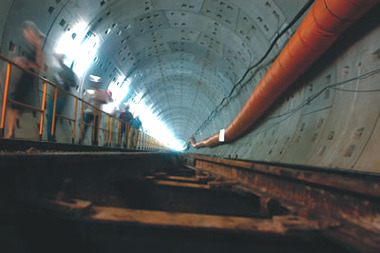The Chinese capital Beijing has stepped up its efforts to explore underground space to ease ground traffic congestion, land use tension in downtown area and environmental problems.
Beijing has fixed 17 areas, including the traditional commercial district of Wangfujing and flourishing Central Business District (CBD), as the key zones for tapping underground space, according to the Beijing Municipal Institute of City Planning and Design.
In the long run, an "underground town" covering 90 million square meters will be established by 2020, with per capita underground space reaching five square meters in the city, according to a plan of the institute.
Currently, Beijing has developed 30 million square meters of underground area, said Shi Xiaodong, a designer of the underground program with the institute.
Underground floor space has expanded by three million square meters in Beijing annually, accounting for ten percent of the city's total floor space completed each year, said Shi.
About 30 percent of the newly developed underground space are parking lots, and underground traffic services account for another 30 percent and the remaining parts are used for commercial and cultural purposes.
(Xinhua News Agency November 12, 2006)

